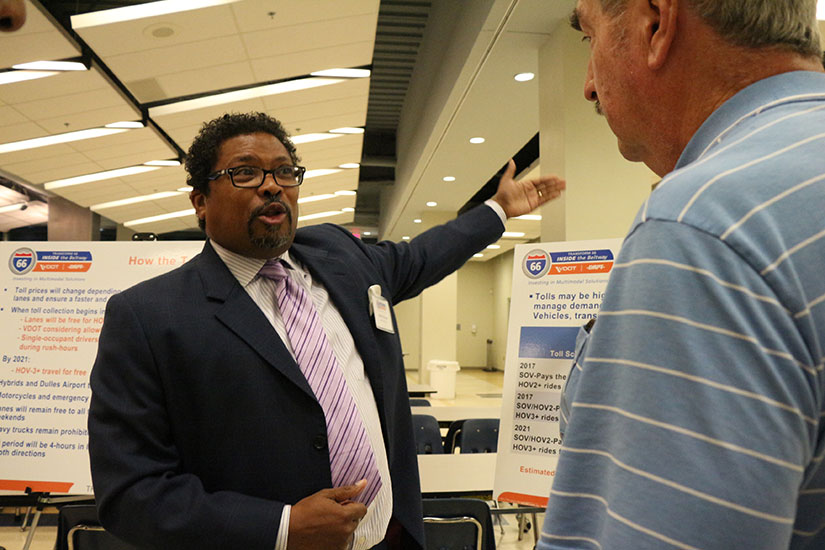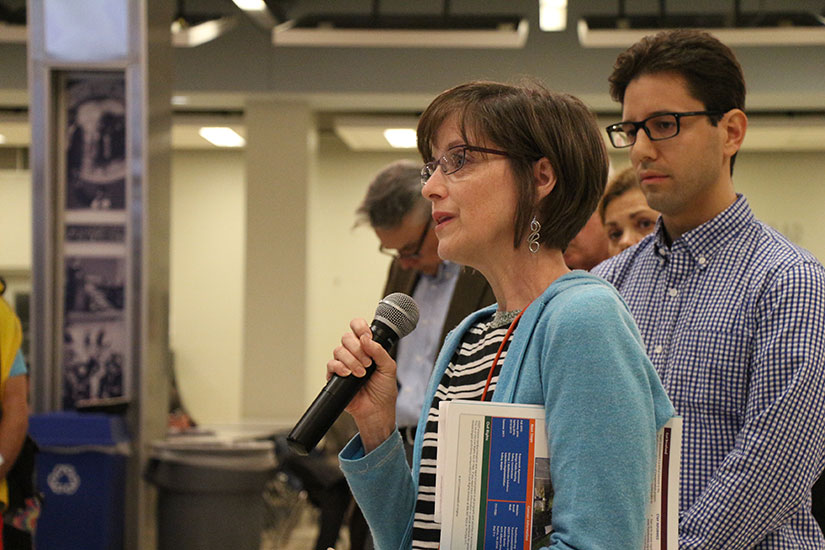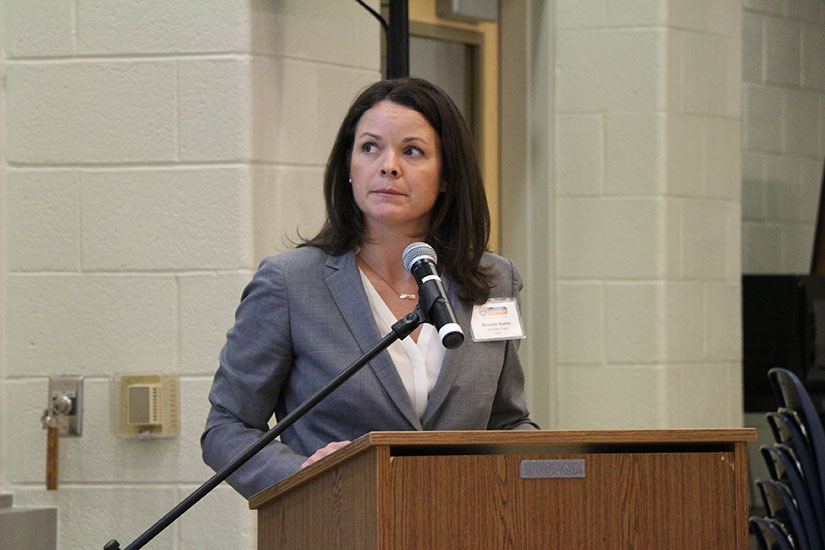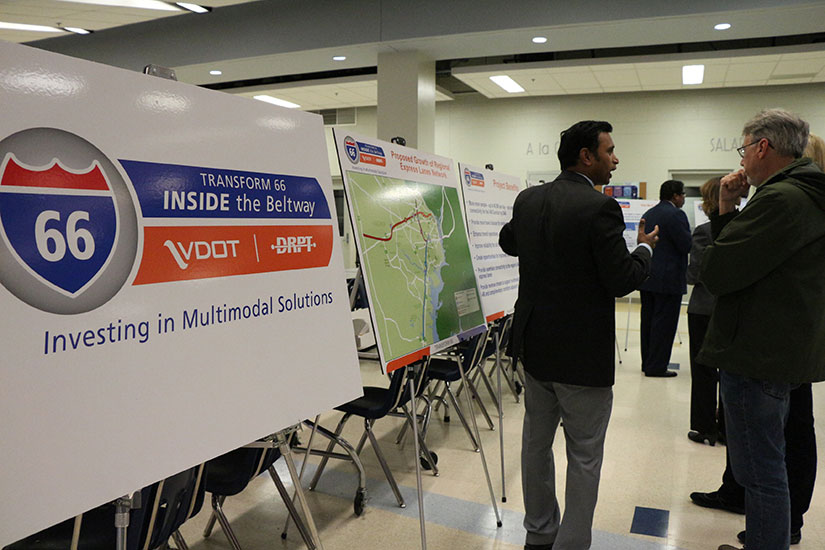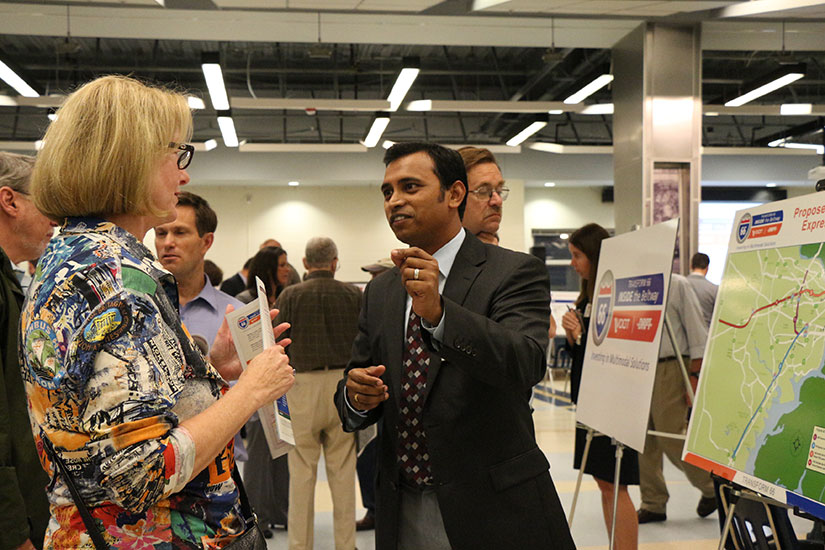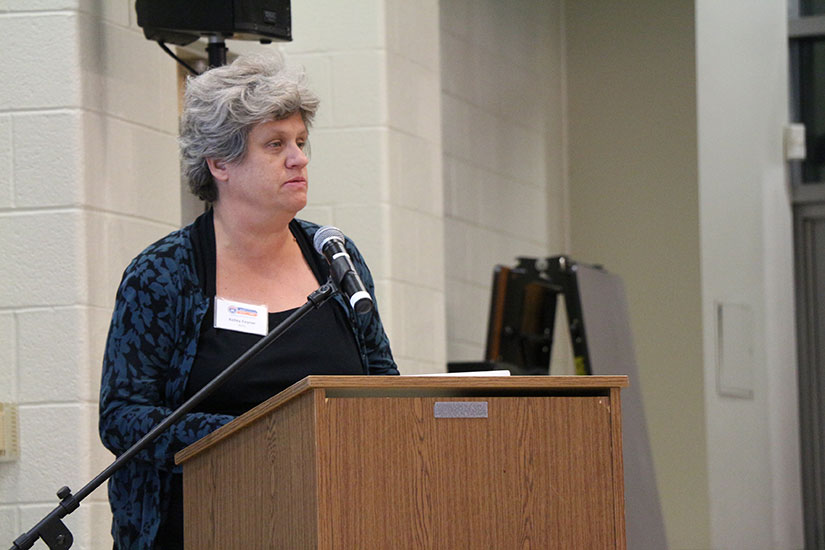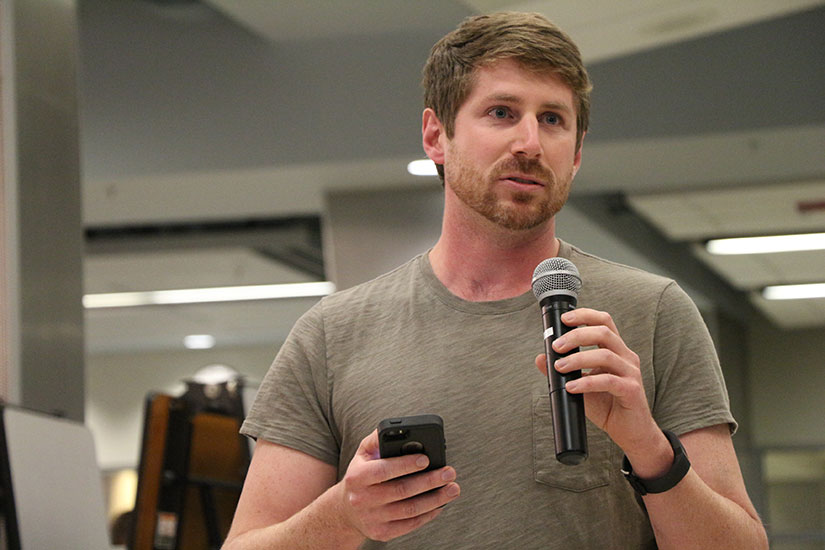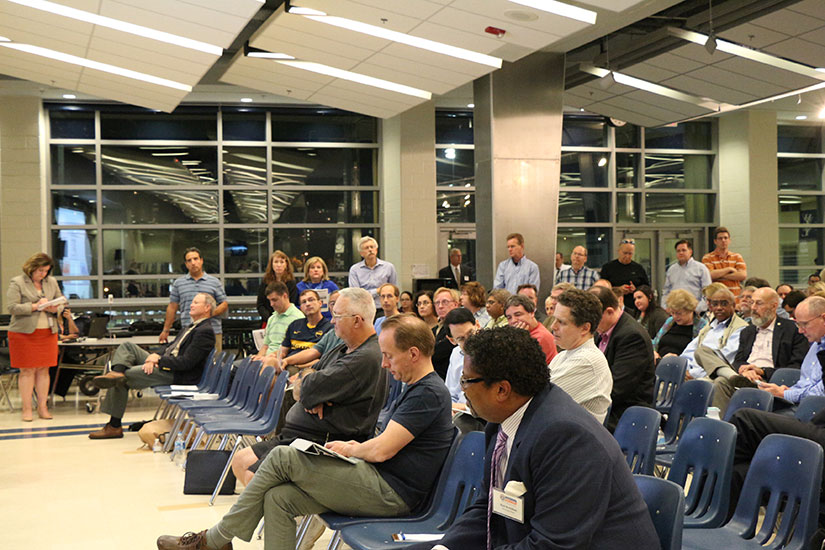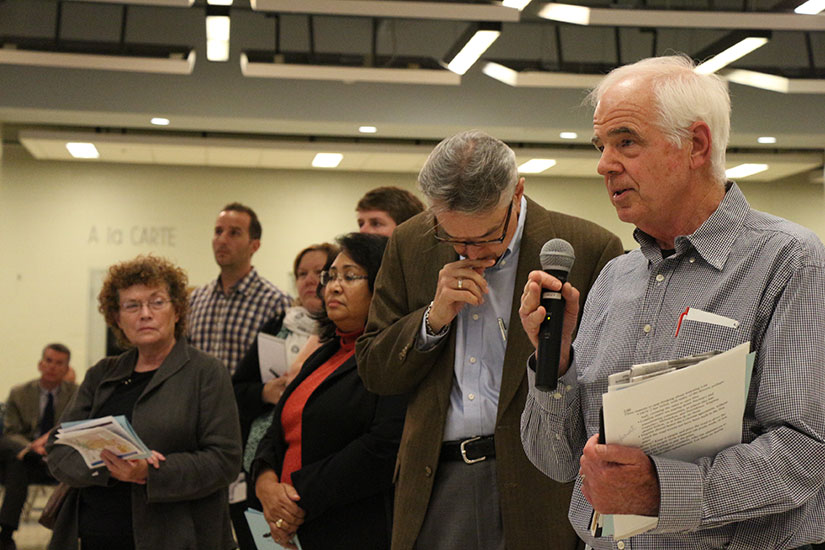(Updated at 2:50 p.m.) At a public forum last night, Arlington residents spoke out against the Virginia Department of Transportation’s plan to turn I-66 into a toll road during rush hour.
VDOT officials met residents at Washington-Lee High School (1301 N. Stafford Street) to discuss the I-66 Inside the Beltway project, which would convert the highway into a toll road during rush hour by 2017 and increase the HOV requirement to three people by 2020.
While some Arlington residents have spoken out in the past about the HOV changes, the audience’s attention was on the dynamically priced tolls proposed by the transportation authority. Members of the audience — who mostly identified themselves as Arlington residents — had a chance to comment on or ask about the plan.
Not one person supported the tolls, even though the biggest impact is likely to be felt by commuters from the outer suburbs.
“The public isn’t benefiting from the HOT lanes, only the wealthy and the privileged,” said one person.
Under VDOT’s plan for I-66, during rush hour both directions of I-66 would be tolled, with the cost depending on the level of demand for the road. During the presentation last night, Amanda Baxter, a VDOT official, said tolls could be as high as $9 for the eastbound morning commute.
I-66 would be tolled for four hours during each rush hour period, possibly from 5:30-9:30 a.m. and 3-7 p.m., Baxter said.
The idea behind the I-66 project is to reduce the amount of congestion on the road, allowing people to move more quickly during rush hour, said VDOT official Rene’e Hamilton.
“Time is money, and basically we are giving people a reliable trip that they can calculate how much time it would actually take them to go through the corridor and to their destination,” she said.
The project aims to improve mass transit, as well, since buses get caught up in the rush hour traffic too, causing daily bus riders to be late to work at least once a week, said Kelley Coyner with Northern Virginia Transportation Commission.
“The same things that hold you up in a car, hold you up in a bus,” Coyner said.
Using the tolls and converting to HOV 3 likely means fewer cars will use I-66 during rush hour. The goal is to have cars and buses consistently traveling at 45 miles per hour during rush hour, Hamilton said.
Currently, speeds can be as low as five miles per hour during evening commutes and 25 miles per hour in the morning. Other times, speeds are as high as 55 or 60 miles per hour, leaving people with an unreliable way of measuring how long their daily commute will be, she said.
“Tolling the facility will help to manage the congestion along the facility and create a reliable trip,” Hamilton said. “That 45 miles per hour that HOV facilities are required to meet.”
The audience mainly took issue with the price of the dynamic tolling, saying it would hurt people who can’t afford to pay $9 every morning.
“These tolls are for a reliable trip for the wealthy,” a resident said.
Another compared paying to use a road to paying to send a child to a public school.
“I’m opposed to tolls,” she said. “I feel roads, like our schools, should be paid for by our taxes.”
Money from the tolls would go into a fund that would pay for improvements to I-66 as well as the roads, like Wilson and Washington Blvds, that would possibly handle an increase in traffic from people diverting off of I-66, Coyner said.
The fund would pay for multimodal projects that would provide benefits to toll payers and move more people on the corridor, Coyner said, but she could not give additional specifics.
People also raised concerns about pushing traffic off on I-66 and onto Arlington roads like Washington and Wilson Blvds and Fairfax Drive.
“It’s already congested. Hearing all these meetings and being at all of them, I still do not see nor do I feel confident that we are properly addressing that, and for the community leaders, it is a huge issue. It already is. It’s going to get worse,” said Ballston-Virginia Square Civic Association President Nia Bagley.
While few Arlington residents at the meeting supported the I-66 proposal, County Board member John Vihstadt said that some do support the I-66 plans. Vihstadt and County Board member Jay Fisette attended last night’s meeting.
“We’ve received letters from people all across the spectrum,” Vihstadt said, while noting that the majority has been against the proposal.
The County Board will hold a public hearing on I-66 and will vote on whether or not to support the plan in November, he said.
“I’m not sold on this plan yet,” Vihstadt said. “I’m looking forward to hearing more data and more information to help me make this decision.”


